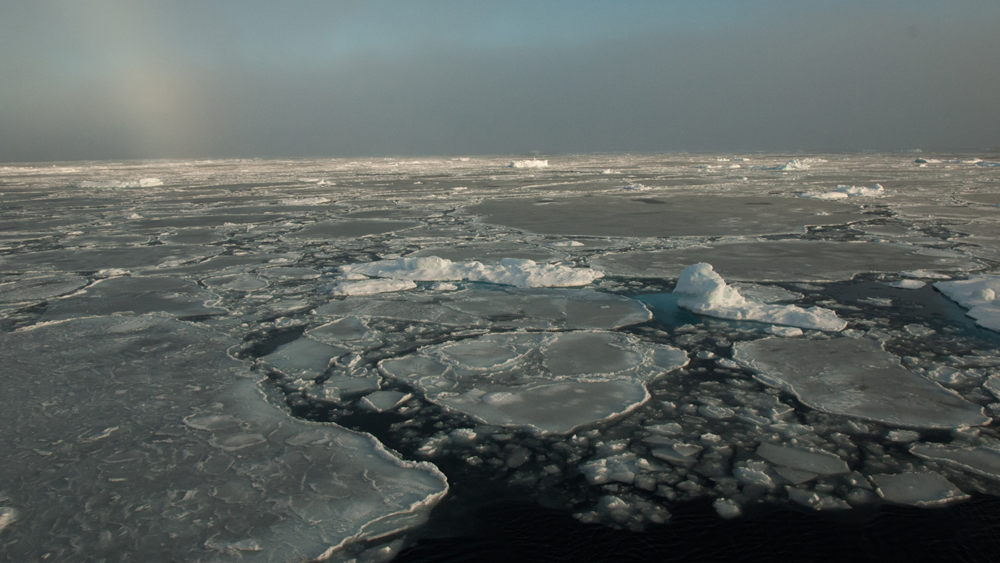From a cosmic perspective, the Earth may appear as a mere “Pale Blue Dot” in a vast universe. However, if you peer closer in, it quickly becomes apparent that life teems on the surface of our home planet—often in some of the most extreme environments. It has for nearly 4 billion years, enduring five major extinction events and ice ages. The Earth very well may be an oasis in a cosmic desert!
However, our globe and its inhabitants now confront a new challenge: human-induced planet-wide heating. As the global temperature gauge continues to rise in response to increasing abundances of greenhouse gasses (e.g. carbon dioxide and methane) that trap solar radiation in our atmosphere, the consequences are becoming more dire.
To delve further into the dynamics of our globe’s warming and its potential future impacts, Michael Gooseff (CU Professor in the Institute of Arctic and Alpine Research) and an international team of 14 authors analyzed the effects of polar ice melting in the Arctic and Antarctic. The Arctic, in particular, was the primary target of their investigation due to the accelerated warming relative to the rest of the planet. Since 1880, this region has experienced a 2℃ to 3℃ temperature increase; comparatively, the Earth has warmed 0.8℃ in the same timeframe. Under a “business as usual” scenario, the Arctic is expected to warm by 13℃ by the end of the 21st century – yikes! But what do scientists think will happen as a result of this warming? How could such a progression influence the evolution of Earth’s atmosphere, cryosphere, and biosphere?
One major concern is the eventual transition to an ice-free summer Arctic Ocean, which seems imminent considering that the Arctic ice has diminished every month across that past 40 years. Local polar bear populations in the Arctic have endured the brunt of this transition. For them, treks across less stable sea ice and open water induce greater physical exertion and elevated nutritional stress, which threaten their survival.

The consequences of Arctic ice melt are not exclusively limited to this region, though. “The poles are connected to the rest of the Earth. What happens at the poles has consequences to weather and sea level around the world,” stated CU researcher Gooseff.
For example, one of the most notable effects of polar melting is mid-latitude weather extremes. The author’s reason that Rossby waves (giant meanders of high altitude winds), can drive these anomalous weather patterns. These westerly waves help transfer hot air from the tropics toward the poles and cold air from the poles toward the tropics. Under normal conditions, they preserve atmospheric balance and cycle high and low-pressure zones across the globe. However, when these waves stall, severe weather is liable to occur (i.e. floods and heatwaves). Stagnant pressure regions can also form and force the polar vortex, a low-pressure zone of cold air above the poles, to spread south – causing freezing temperatures at mid-latitudes. These processes are thought to intensify when there is a high contrast between land and ocean temperatures, which is expected to increase with further planet-wide warming.
Maybe the most obvious impact of polar sea ice loss is sea-level rise. In this regard, the authors investigate the impacts of 7℃ warming in the Arctic, 3℃ in the Antarctic, and 2℃ globally. The researchers report a predicted 0.5m global sea rise at the end of the 21st century, primarily due to the thermal expansion of ocean water, the melting of mountain glaciers, and the increase of ice sheet flow and meltwater runoff from the Greenland and Antarctic ice sheets.
“Many polar ecosystems have shown resilience to state changes,” said Gooseff. “But there’s an expectation that continued warming of polar regions will push many systems beyond tipping points.”
What about the impact of polar warming on large herbivores? The link between tundra shrub and declining sea-ice abundance may help shed light on the matter. The authors considered this relation in their study of the Yamal Peninsula, where nearly 340,000 reindeer reside. What they uncovered was that during the summer, warming increases deciduous shrub growth. However, in the winter, warming drives extensive rain-on-snow events. As a result, ice-encrusted shrub renders the vegetation inedible and subsequently leads to severe mass starvation of the reindeer.

The final focus of their analysis was the abrupt changes in the Antarctic ecosystem. The researchers investigated Antarctica’s McMurdo Dry Valleys (MDVs) ecosystem and report a decadal cooling period between 1987-2000. During this time, the MDV had thickening ice, lowering lake levels, reduced glacial melting, and drier soils. However, in 2002 warm temperatures arrived and increased glacial melt. This produced enhanced stream flows, thinning ice, and increased lake levels. The subsequent decade revealed no clear pattern in summer air temperatures or solar radiation. The authors suspect that these unpredictable events may foreshadow future responses to rapid changes in climate.
The Earth’s atmospheric, cryogenic, and biospheric responses to polar melting are beginning to surface and the authors have described how some of the effects, such as sea-level rise, extreme weather, ecological disruption, and climate variability, extend from the poles to the mid-latitudes. To mitigate these issues and decelerate planet-wide heating, an international effort is required. This can be realized primarily through the universal reduction of carbon emissions. Without doing so, warming at the poles and across the globe are likely to accelerate. Further, current and planned NASA Earth Science Missions will be essential for tracing accurate space-based measurements of precipitation, temperature, soil moisture, ice cover, snow cover, climate, and ozone trends on Earth.
Ultimately, our efforts will determine if the Earth remains an oasis where life continues to thrive.
by Jimmy Negus

Comments are closed.